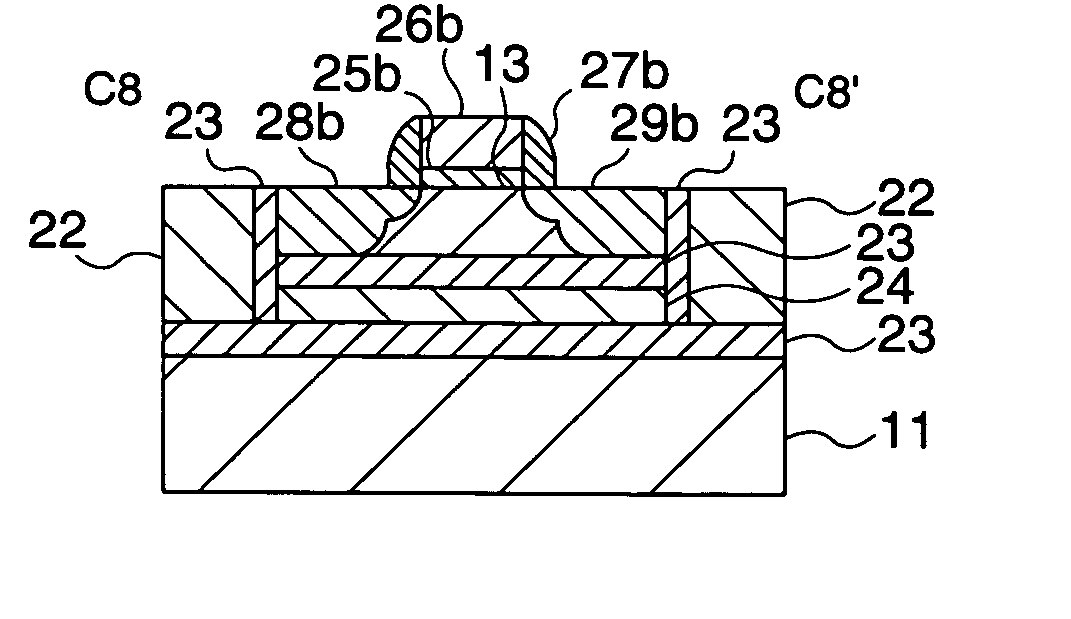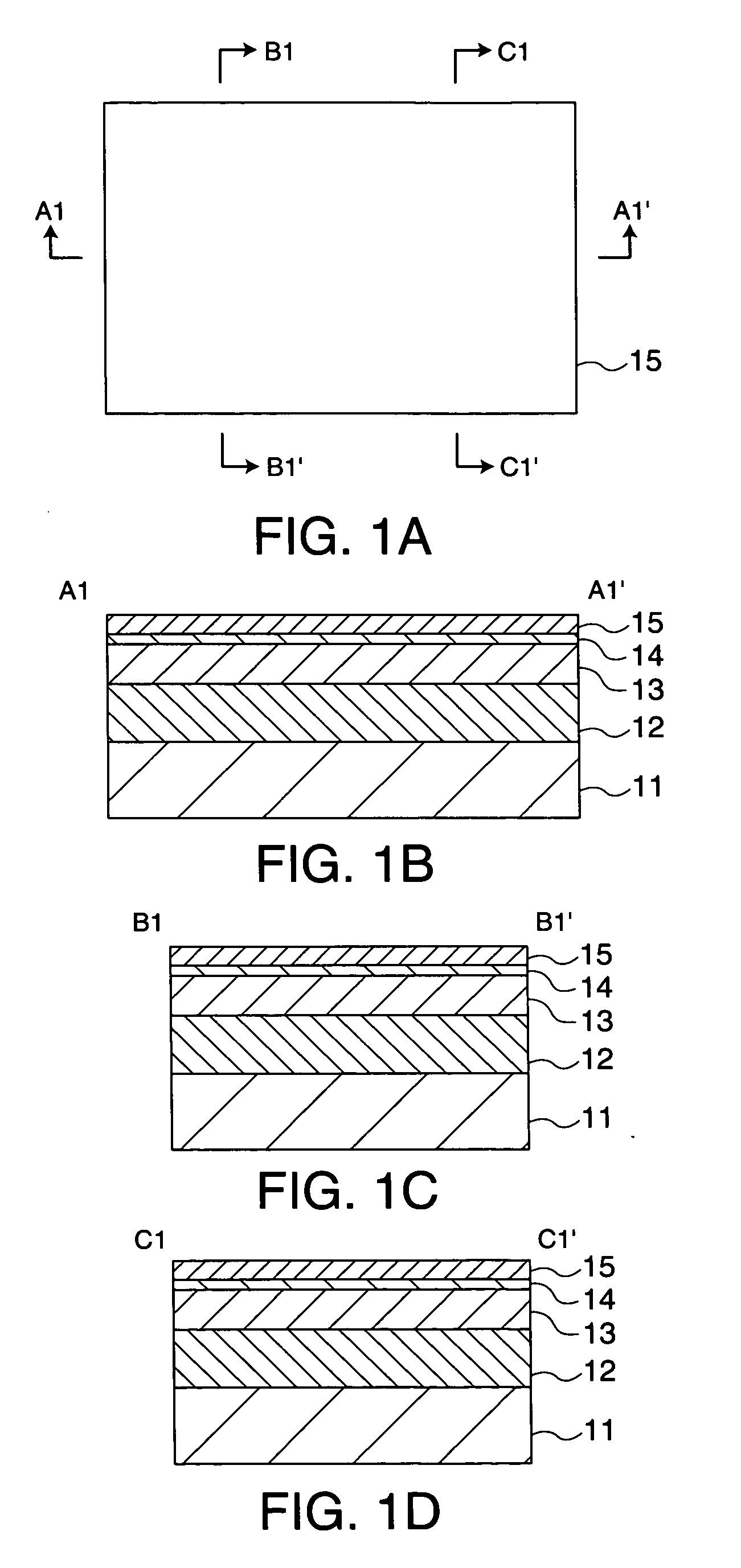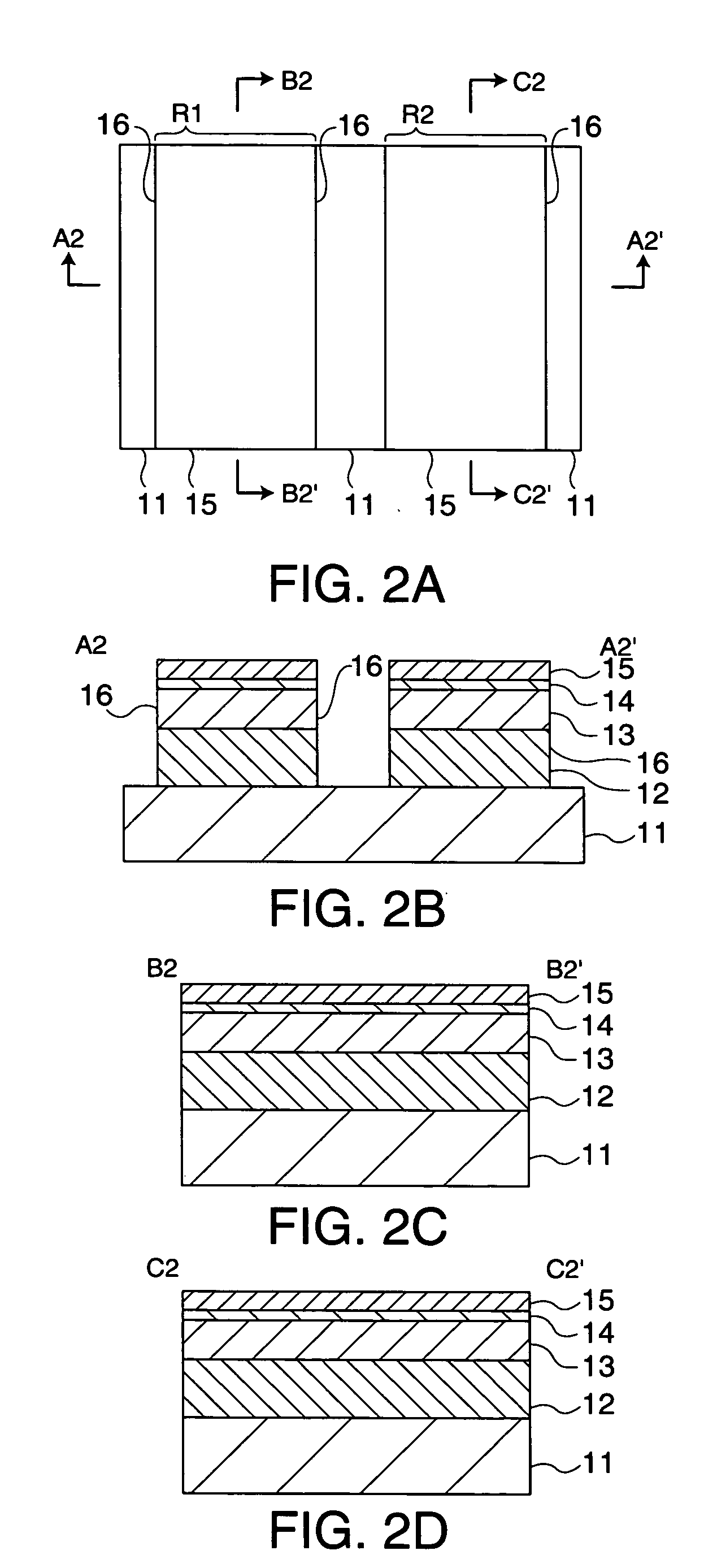Semiconductor device and method of fabricating the same background
a semiconductor and background technology, applied in the field of semiconductor devices, can solve the problems of inferior transistor characteristics of field effect transistors formed in such silicon thin films, grain boundaries of silicon thin films formed on insulating films, and flatness of base insulating films, so as to prevent deterioration of carrier mobility, stabilize transistor characteristics, and suppress crystallinity deterioration
- Summary
- Abstract
- Description
- Claims
- Application Information
AI Technical Summary
Benefits of technology
Problems solved by technology
Method used
Image
Examples
first embodiment
[0102]FIGS. 1A to 8A are top views each showing a method of manufacturing a semiconductor device according to a first embodiment of the invention, FIGS. 1B to 8B are cross sections along the lines A1-A1′ to A8-A8′ of FIGS. 1A to 8A, and FIGS. 1C to 8C are cross sections along the lines B1-B1′ to B8-B8′ of FIGS. 1A to 8A.
[0103] In FIGS. 1A to 1D, a first semiconductor layer 12 is formed on a semiconductor substrate 11 by epitaxial growth, and a second semiconductor layer 13 is formed on the first semiconductor layer 12 by epitaxial growth. As the first semiconductor layer 12A, it is possible to use a material that has a larger etching rate than the semiconductor substrate 11 and the second semiconductor layer 13. As materials of the semiconductor substrate 11, the first semiconductor layer 12, and the second semiconductor layer 13, it is possible to use a combination of what are selected from among Si, Ge, SiGe, SiC, SiSn, PbS, GaAs, InP, GaP, GaN, ZnSe, or the like. In particular, ...
second embodiment
[0123]FIGS. 9A to 16A are top views each showing a method of manufacturing a semiconductor device according to a second embodiment of the invention, FIGS. 9B to 9B are cross sections along the lines A21-A21′ to A28-A28′ of FIGS. 9A to 16A, and FIGS. 9C to 16C are cross sections along the lines B21-B21′ to B28-B28′ of FIGS. 9A to 16A.
[0124] In FIG. 9, semiconductor layer 151, 133, 152, and 135 are sequentially formed on a semiconductor substrate 131 by epitaxial growth. As the semiconductor layers 151 and 152, it is possible to use a material with a larger etching rate than the semiconductor substrate 131 and the semiconductor layers 133 and 135. In particular, when the semiconductor substrate 131 is Si, SiGe is preferably used as a material of the semiconductor layers 151 and 152, Si as a material of the semiconductor layers 133 and 135.
[0125] Thereafter, a base oxidation film 153 is formed on the surface of the semiconductor layer 135 by thermal oxidation, CVD, or the like of the...
third embodiment
[0136]FIGS. 17A to 26A are top views each showing a method of manufacturing a semiconductor device according to a third embodiment of the invention, FIGS. 17B to 17B are cross sections along the lines A31-A31′ to A40-A40′ of FIGS. 17A to 26A, and FIGS. 17C to 26C are cross sections along the lines B31-B31′ to B40-B40′ of FIGS. 17A to 26A.
[0137] In FIG. 17, a first semiconductor layer 212 is formed on a semiconductor substrate 211 by epitaxial growth, and a second semiconductor layer 213 is formed on the first semiconductor layer 212 by epitaxial growth. As the first semiconductor layer 212, it is possible to use a material that has a larger etching rate than the semiconductor substrate 211 and the second semiconductor layer 213. As materials of the semiconductor substrate 211, the first semiconductor layer 212, and the second semiconductor layer 213, it is possible to use a combination of what are selected from among Si, Ge, SiGe, SiC, SiSn, PbS, GaAs, InP, GaP, GaN, ZnSe, and the ...
PUM
 Login to View More
Login to View More Abstract
Description
Claims
Application Information
 Login to View More
Login to View More - R&D
- Intellectual Property
- Life Sciences
- Materials
- Tech Scout
- Unparalleled Data Quality
- Higher Quality Content
- 60% Fewer Hallucinations
Browse by: Latest US Patents, China's latest patents, Technical Efficacy Thesaurus, Application Domain, Technology Topic, Popular Technical Reports.
© 2025 PatSnap. All rights reserved.Legal|Privacy policy|Modern Slavery Act Transparency Statement|Sitemap|About US| Contact US: help@patsnap.com



